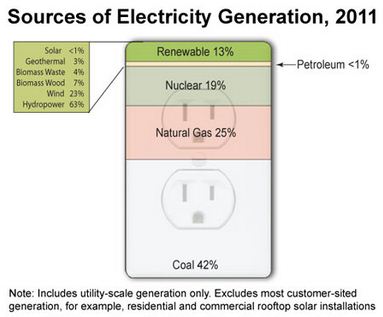Iran As A Cause
SEARCH BLOG: IRAN
Yesterday, I listened to an interview with Amir Taheri, author of "Persian Night." He brought a perspective that Western leaders tend to overlook when examining the issue of Iran's relationship... or lack thereof... with the West, particularly the U.S.: the western, liberal leaders look at Iran as a nation which will respond to logic, reason, and incentives in a negotiation process, but they fail to recognize that there is Iran the Cause which goes beyond the dynamics of the nation.
In some respects, this mirrors... darkly... the history of the U.S. as both a nation and a cause. The concept of a republic comprised of individuals who determined their own destiny and controlled their own government for their own benefit was more than the founding principles of a nation; it was a philosophy, a gospel, to be spread among the nations of the world. Iran sees itself in a similar position today. The difference is the philosophy or cause being represented.
Last December, Mr. Taheri had another interview where he covered this concept with the New York Post:
THE PERSIAN NIGHT
IRAN'S LEADERS PROMOTE DELUSION, NOT DIPLOMACY
The Western belief system insists that individual freedom, science, and reason are the natural states of mankind and that any other approach is inferior and destined to failure. Yet history has shown that is not always the case. When one considers the small fraction of the human population that live within the boundaries of nations embracing the ideals upon which the U.S. was founded, one would be foolish to belief that such conditions are either natural or inevitable.By JAMES S. ROBBINS
"The Islamic Republic of Iran has three phobias," according to Iranian expatriate journalist Amir Taheri. "Women, Jews and America." Forget bombs. Maybe we should send in Barbra Streisand.
Iran is a standing challenge to Western liberal notions of "the intrinsic worth of the individual, freedom of conscience and the rule of law," not that any of that bothers the regime, Taheri says. He describes the activities of the Islamic Morality Brigades, the state-supported Holocaust denial movement, Iran's practice of executing dissidents and homosexuals - the rich tapestry of contemporary Iranian life that should make the country an international embarrassment but for the fact that the regime feels absolutely no shame.The United States, a former Iranian ally, is viewed as the focus of evil in the world, and a hapless giant that "cannot do anything." Meanwhile, the United States' relationship with Iran has had its embarrassing moments, such as when former President Clinton said that Iran is "the only country where progressive ideas enjoy a vast constituency" or when US Ambassador to the United Nations Andrew Young called the Ayatollah Khomeini "a twentieth-century saint."
Mohammed Raza Pahlavi, the former Shah, who is usually dismissed by Western intellectuals as a brutal puppet, was the real progressive saint compared with his successor. Indeed, it is useful to remember that his liberal, pro-Western policies made Iran "the first Muslim nation to acknowledge women as citizens with equal rights." And the Shah's 1960s-era pro-women reforms were what drove the Ayatollah Khomeini over the edge. One of the first acts of Khomeini's revolution was to readjust the status of women in Iranian society, following the dictum of Iran's Chief Justice, "A woman's basic duty is to be a slave to her husband."
Now the hijab has become the most recognized symbol of the status of women in the new Iran, necessary because, according to Abol-Hassan Bani-Sadr, the first president of the Islamic Republic of Iran, women's hair gives off "dangerous rays that drive men crazy." The regime has raised the ideological value of the hijab to extraordinary heights; as one Iranian woman supporter of the headgear noted, "The superpowers know that the hijab is the foundation of Islamic government and that to conquer the Persian Gulf and plunder its oil resources, they must first eliminate hijab." Such comments would be laughable if they were not indicative of the sincere beliefs of a regime that is seeking nuclear weapons.
Taheri's "Persian Night" presents the true nature of the regime in Tehran, its motives, objectives and beliefs. Since the Obama administration seems to think that much can be gained from open dialogue, and Washington think tanks hum with talk of a "grand bargain" with Iran to settle the outstanding issues of the Middle East, we must appreciate the people with whom we are dealing. President Mahmoud Ahmadinejad, elected in June 2005 under the oddly familiar slogan "We Can!" has recently stated, "Our mission in the arena of foreign affairs is to present the idea of Pure Islam as the only path for the salvation of mankind to all nations. We have to smash the existing models in the world."
Taheri concludes that negotiation with the Iranian regime is a waste of time; it would encourage optimism in the West but leave the Khomeinist regime intact and its objectives unchanged. Real progress can only come from regime change from within. Iran is "a heaving volcano, ready to explode," from a variety of internal pressures, and the best role for the United States is to "use its immense bully pulpit" to publicize the cause of the oppressed people of Iran. Can this be effective? The Soviet Union fell, Taheri argues, "so why not Iran, and why not now?"
A nice thought, but given the effectiveness of Tehran's secret police and the general climate of fear in Iran, one wonders who can get the job done.
James S. Robbins is senior fellow for National Security Affairs at the American Foreign Policy Council.
The Persian Night
Iran Under the Khomeinist Revolution
by Amir Taheri
Encounter Books
Whether it is Iran, al Qaeda, or the Taliban, one does not reason with a hungry tiger... or those with the only truth and a true cause.
..






